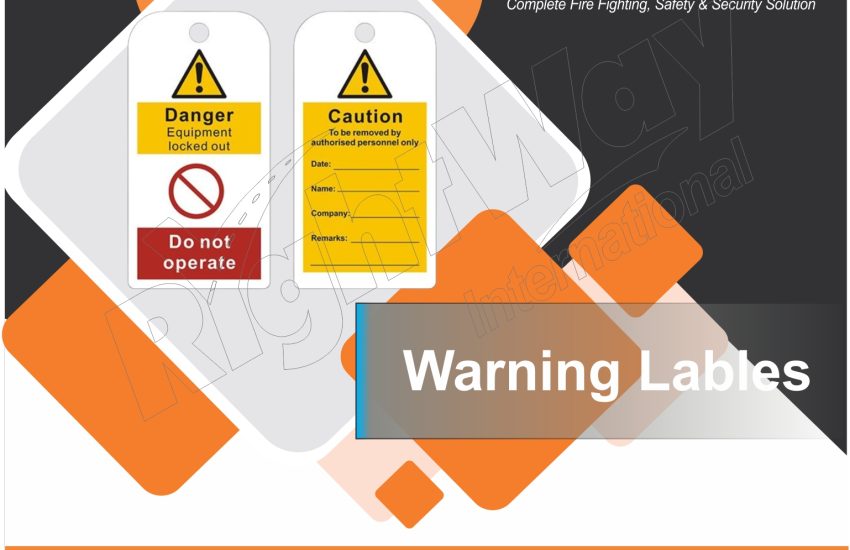Lockout Warning Labels are crucial components in safety management systems, particularly in environments where machinery and equipment are serviced or maintained. These labels provide essential information to prevent accidental or unauthorized operation during maintenance, ensuring that safety protocols are followed. This article explores the significance of lockout warning labels, their types, and best practices for effective use.
The Importance of Lockout Warning Labels
Lockout warning labels serve several critical functions:
- Preventing Accidents: By clearly marking equipment that is undergoing maintenance or repair, these labels alert workers to the potential dangers associated with accidental activation or release of hazardous energy.
- Compliance with Regulations: Many safety standards, such as OSHA’s Lockout/Tagout (LOTO) standard, require the use of warning labels to inform personnel about the status of machinery and the associated risks, ensuring compliance with legal requirements.
- Promoting Safety Awareness: Lockout warning labels enhance overall safety culture by providing visible reminders of ongoing maintenance and reinforcing the importance of following safety procedures.
- Reducing Liability: Proper use of lockout warning labels helps prevent accidents and injuries, which can reduce the risk of legal liabilities and associated costs for organizations.
Types of Lockout Warning Labels
- Lockout Tags:
- Description: These are typically attached to the lockout device or lockout point. They include information such as the name of the person performing the maintenance, the date, and a brief description of the work being done.
- Benefits: Provides clear identification of the maintenance activity and responsible personnel, preventing accidental reactivation.
- Warning Labels:
- Description: Fixed labels or stickers that are applied directly to equipment or control panels. They include warnings about the potential hazards and instructions for safe operation.
- Benefits: Permanently communicates critical safety information directly at the source of potential danger.
- Danger Tags:
- Description: Tags used to indicate a higher level of risk or danger associated with the equipment. They typically include bold text and symbols to draw immediate attention.
- Benefits: Highlights equipment or areas with heightened risks, ensuring that workers are aware of the increased danger.
- Caution Labels:
- Description: These labels provide less severe warnings compared to danger tags but still alert workers to potential hazards or necessary precautions.
- Benefits: Offers necessary cautionary information to prevent accidents, without conveying an extreme level of danger.
- Lockout/Tagout Kits:
- Description: Comprehensive kits that include a variety of lockout devices, tags, and labels for different types of equipment and scenarios.
- Benefits: Provides a complete solution for lockout/tagout needs, ensuring that all necessary components are available for effective safety management.
Best Practices for Using Lockout Warning Labels
- Clearly Visible Placement: Ensure that labels are placed in highly visible locations where they will be easily noticed by anyone interacting with the equipment or control panels.
- Proper Label Content: Include essential information such as the name of the person performing the maintenance, the date, the reason for the lockout, and any specific instructions or warnings.
- Regular Updates: Update labels as necessary to reflect changes in maintenance status or personnel. Ensure that outdated or irrelevant labels are promptly removed or replaced.
- Consistent Use: Implement standardized procedures for using lockout warning label across all departments and equipment to maintain consistency and reinforce safety protocols.
- Training and Awareness: Train employees on the importance of lockout warning label and how to properly use them as part of the lockout/tagout process. Ensure that everyone understands the role of these labels in maintaining a safe work environment.
- Compliance with Regulations: Adhere to relevant safety standards and regulations concerning lockout/tagout practices, including the use of warning labels, to ensure legal compliance and enhance safety.
Conclusion
Lockout warning labels are vital tools for maintaining safety during the maintenance and repair of machinery and equipment. By clearly communicating the status of equipment and potential hazards, these labels help prevent accidents, ensure compliance with safety regulations, and promote a culture of safety within the workplace. Implementing best practices for the use of lockout warning label can significantly enhance overall safety and operational efficiency.


